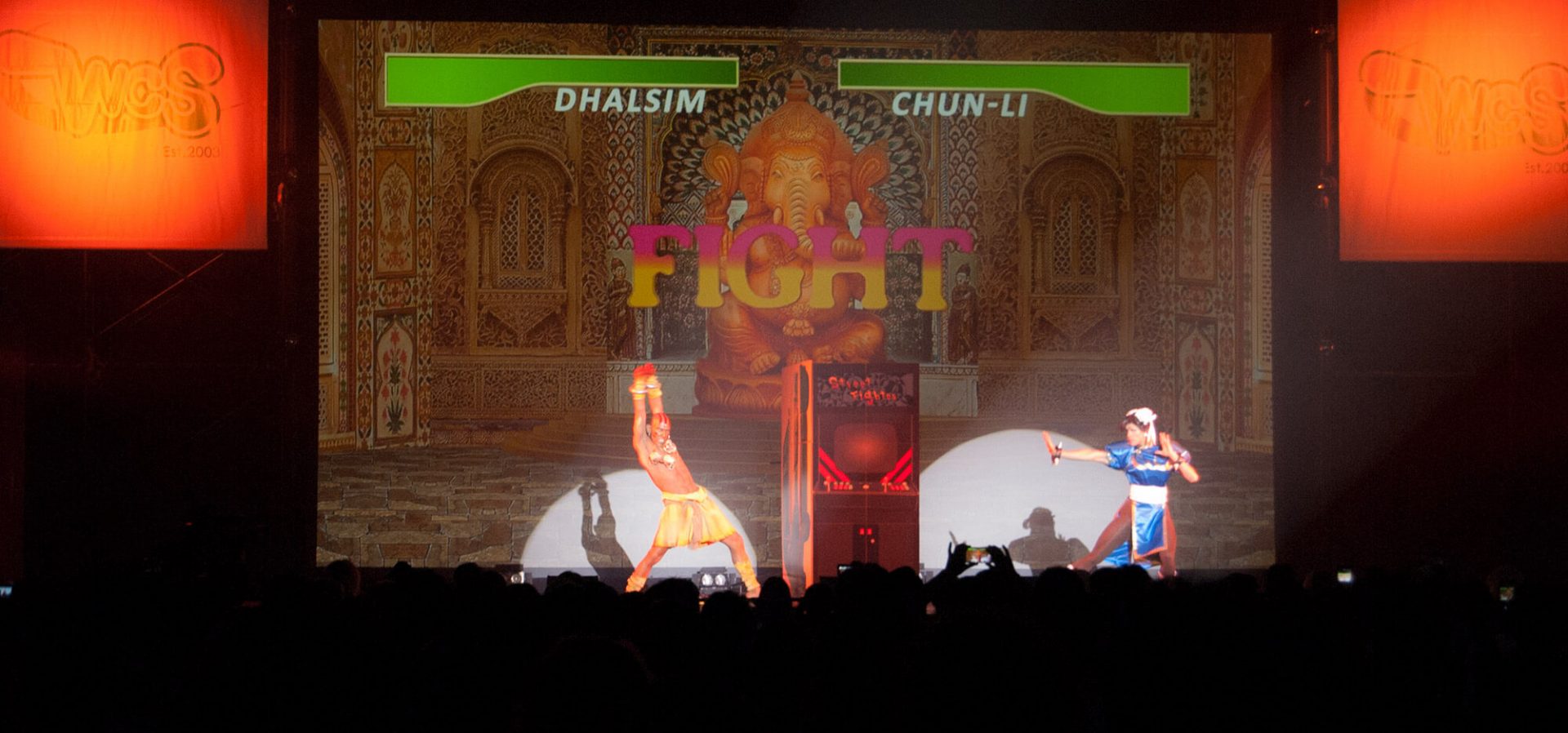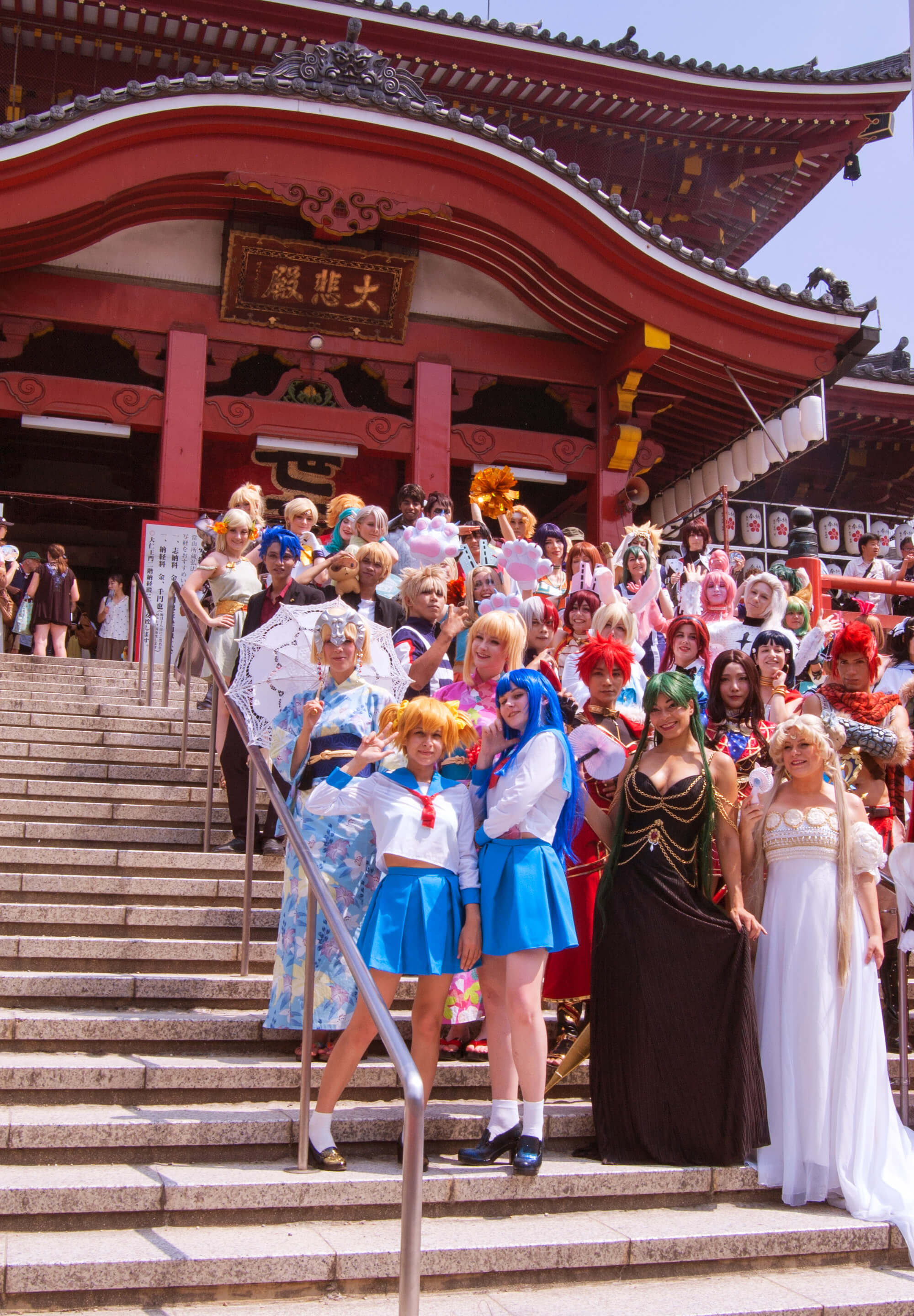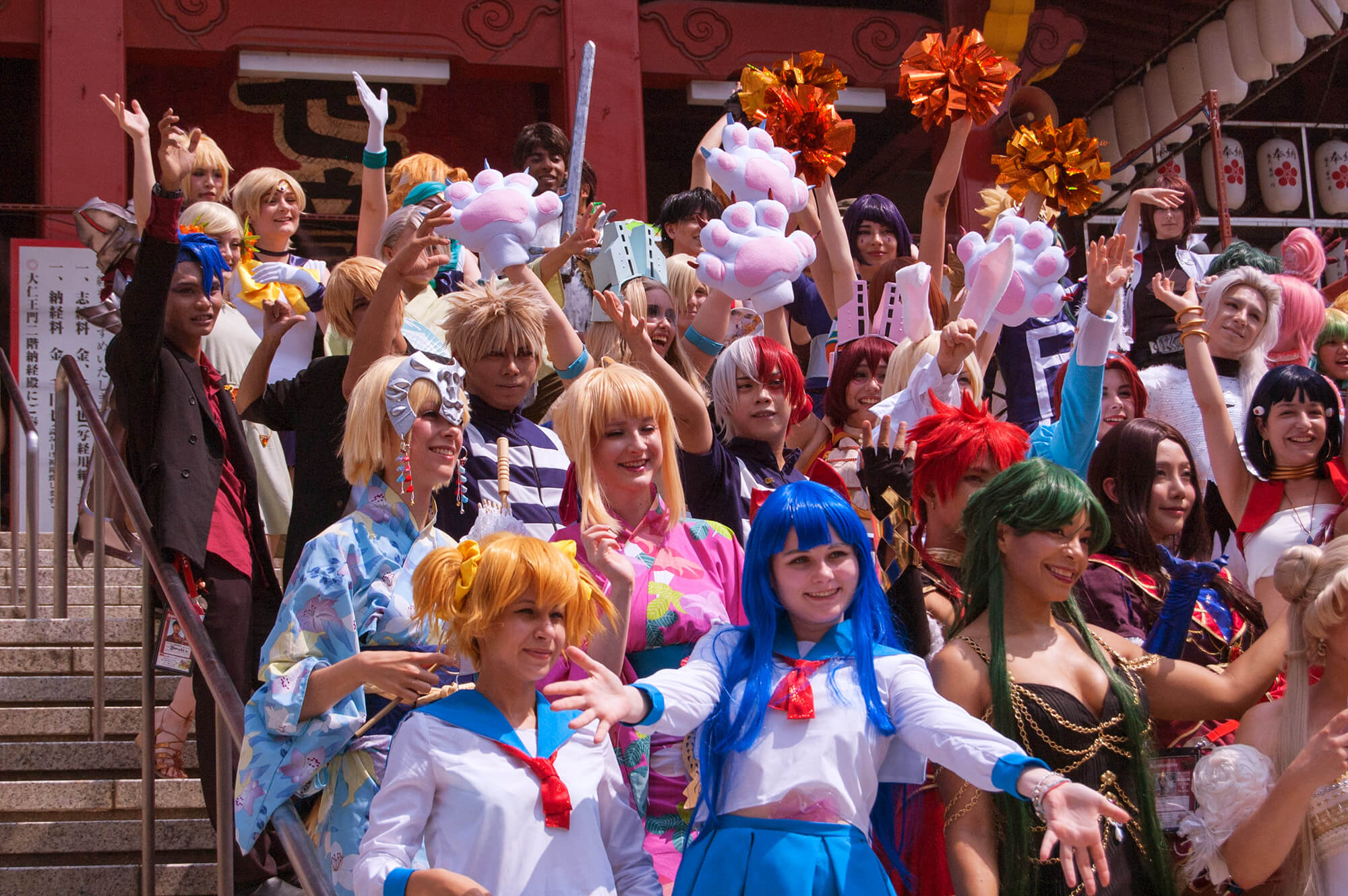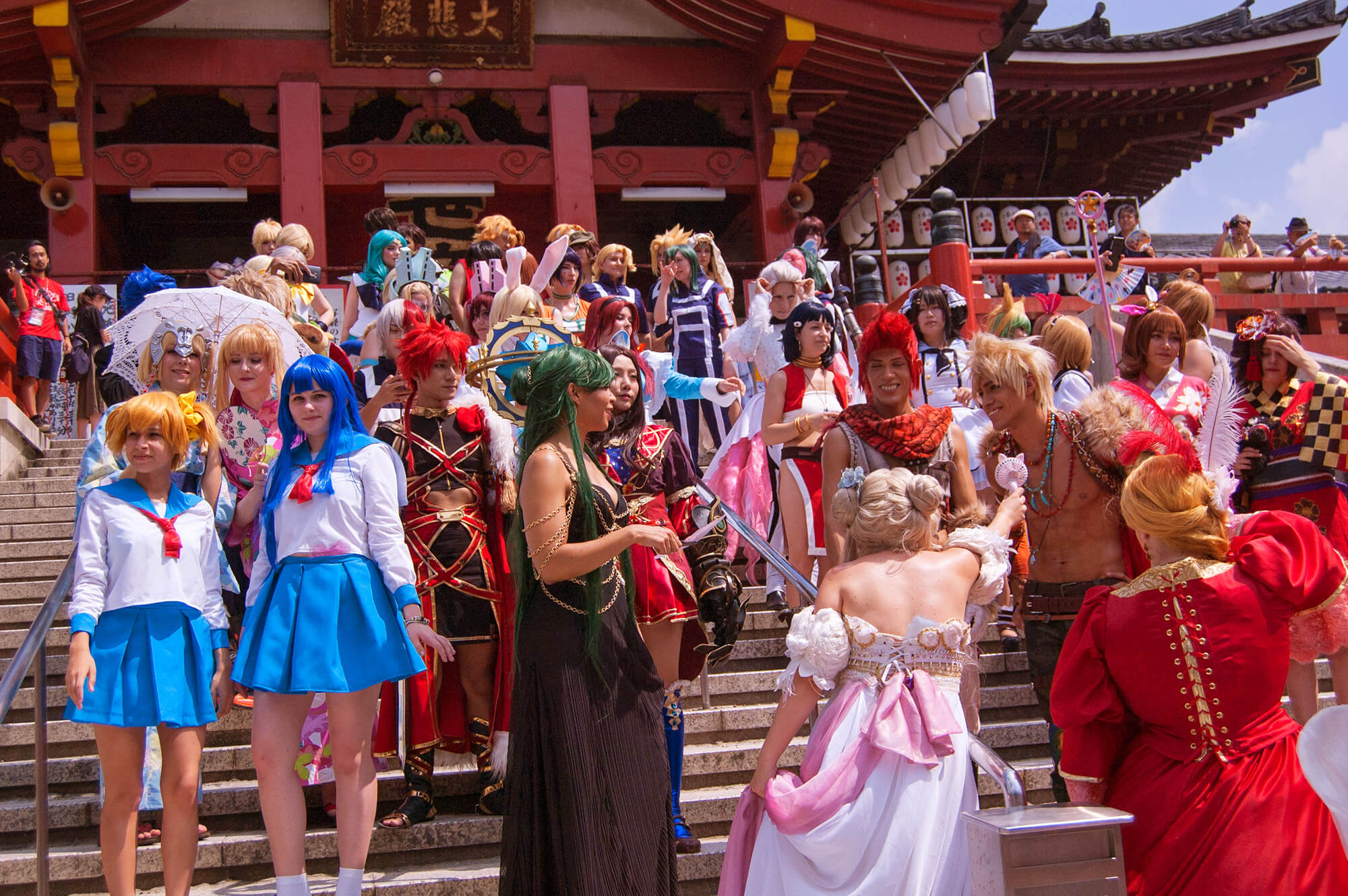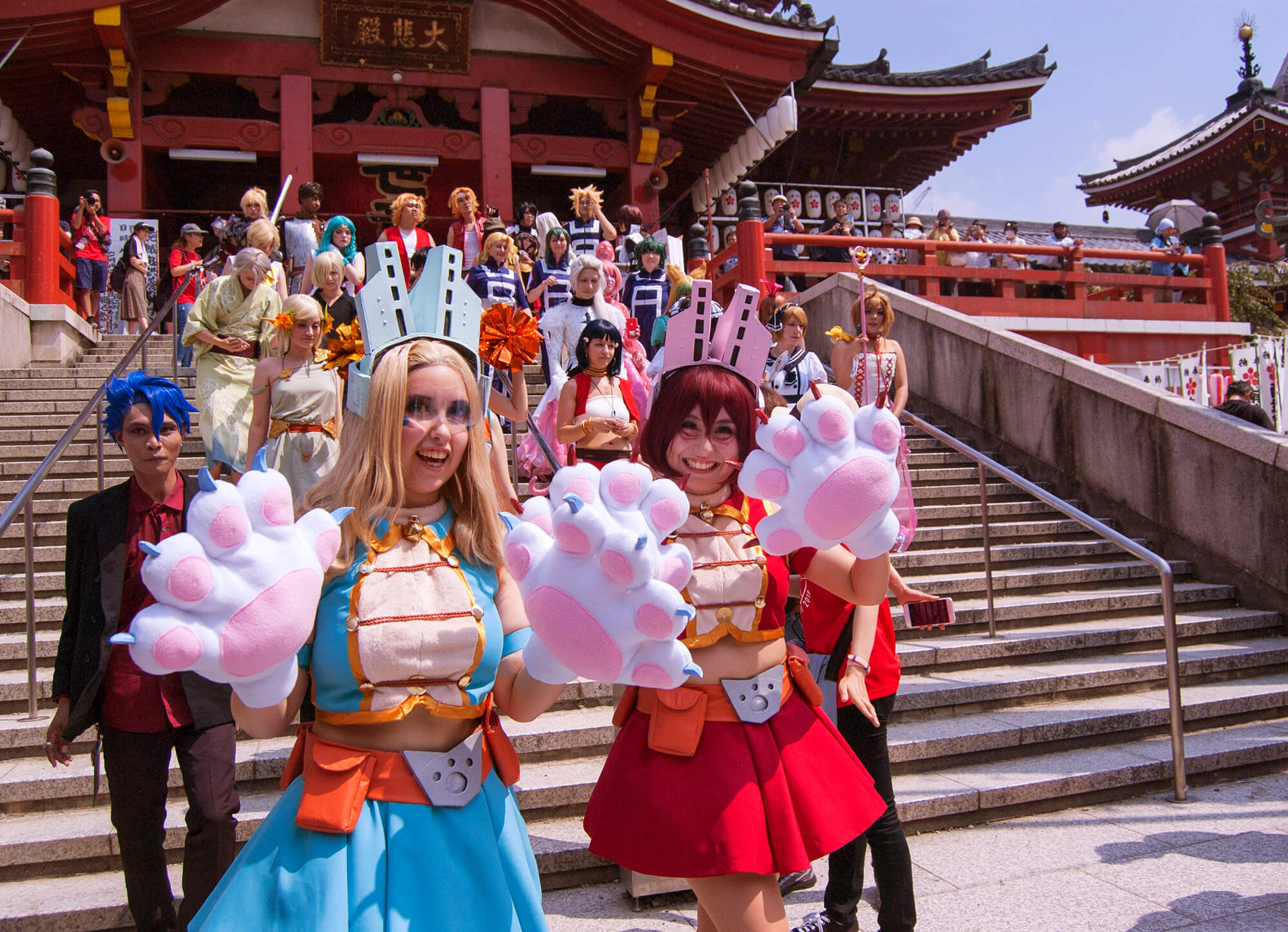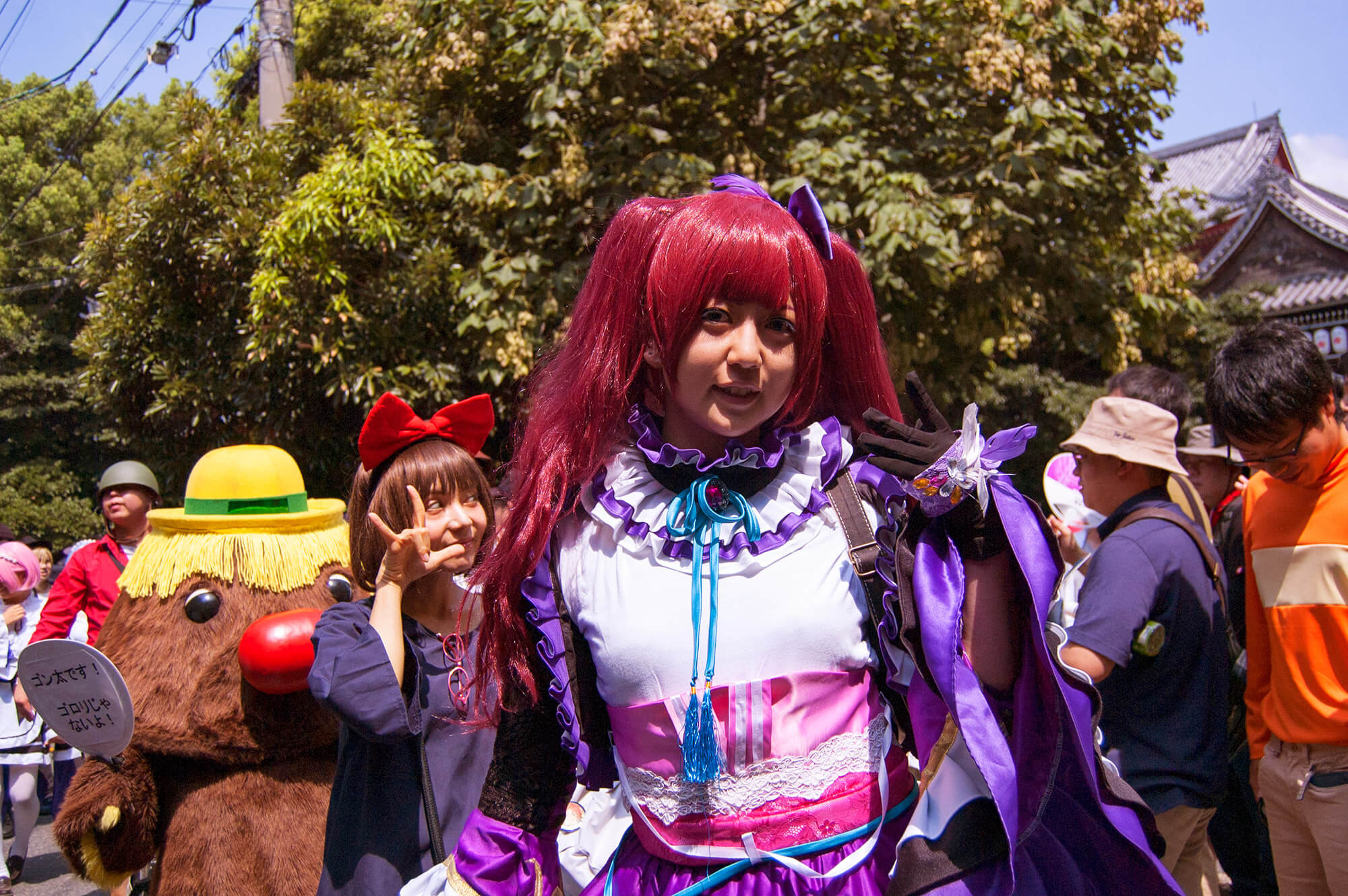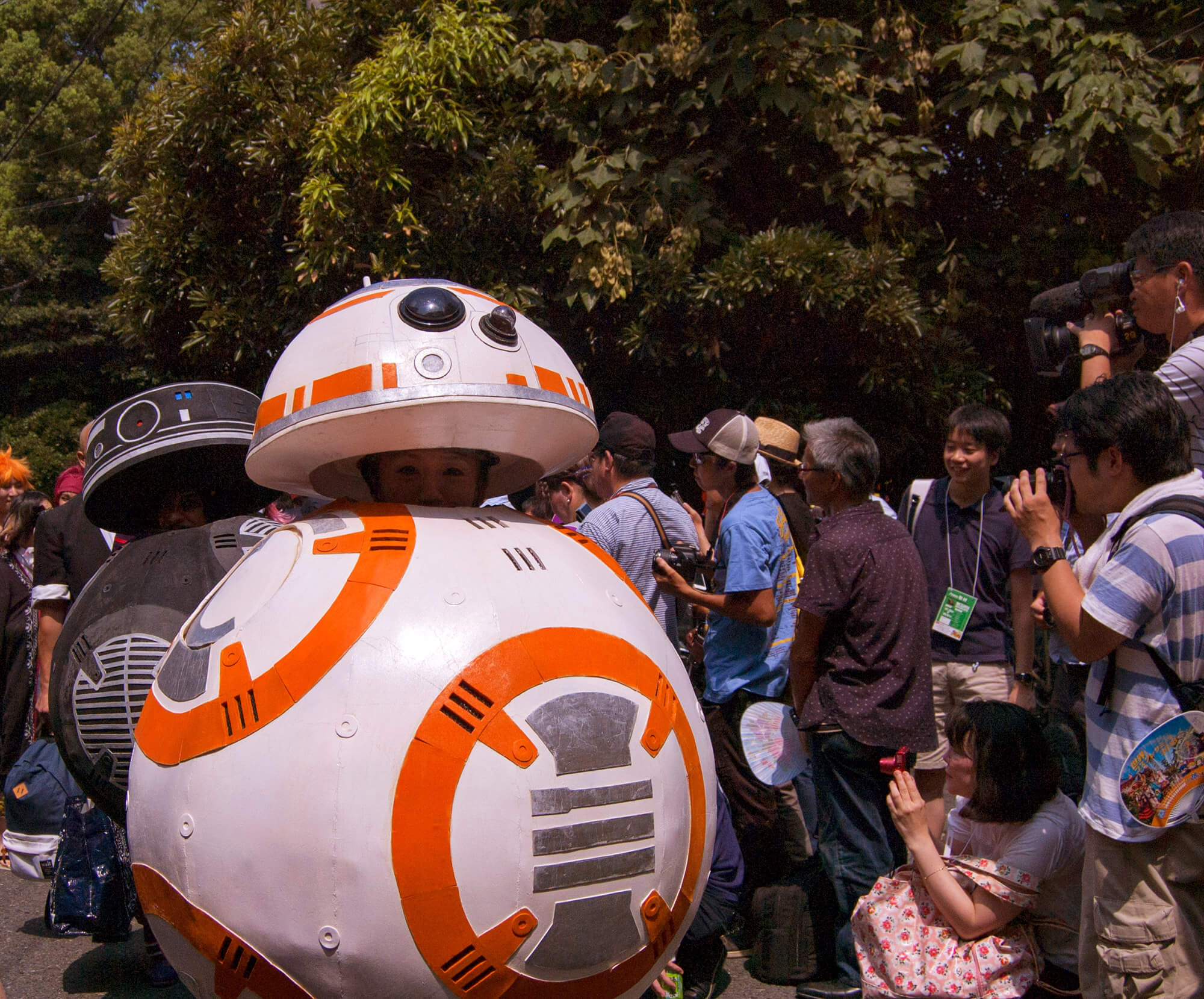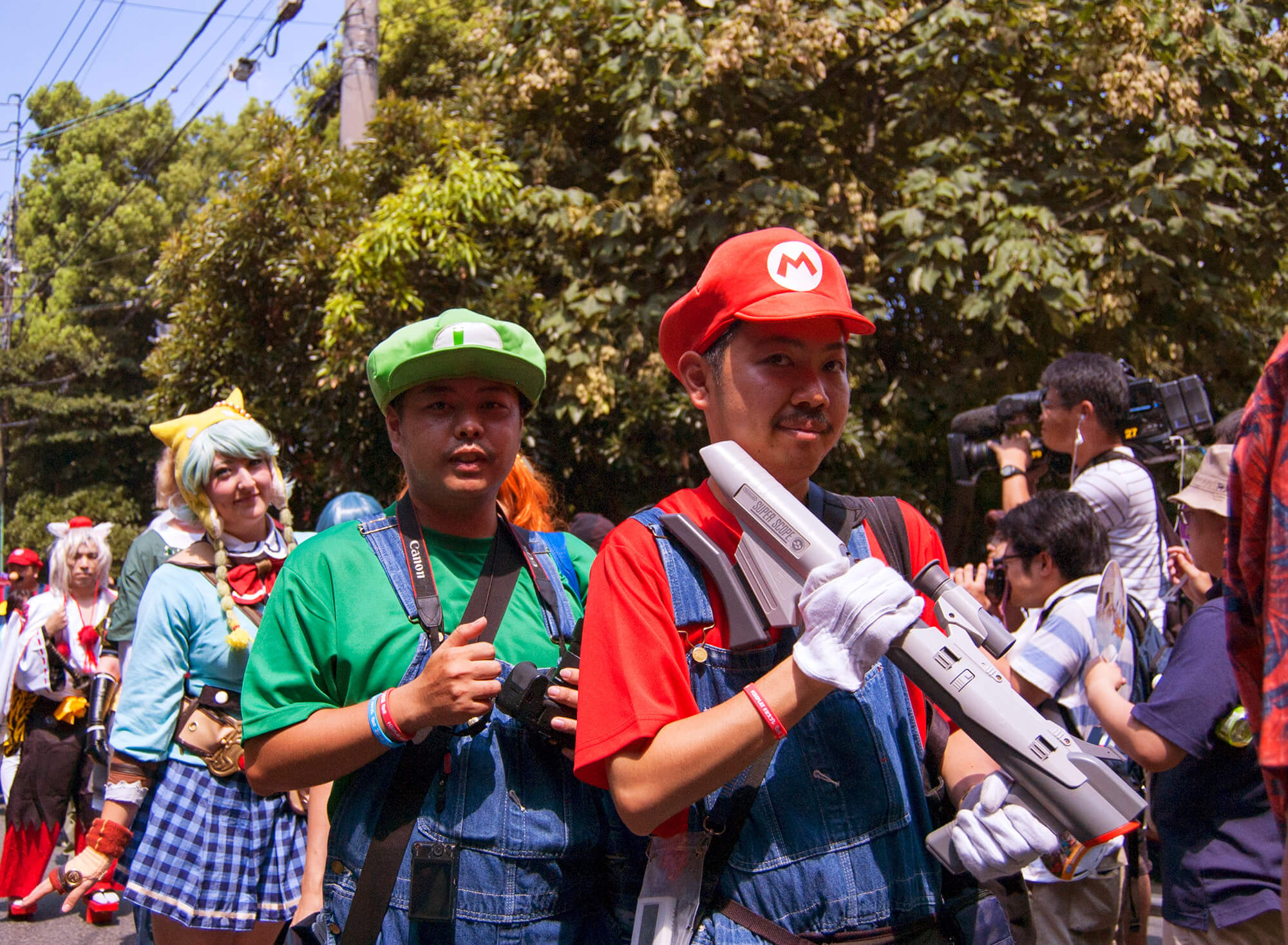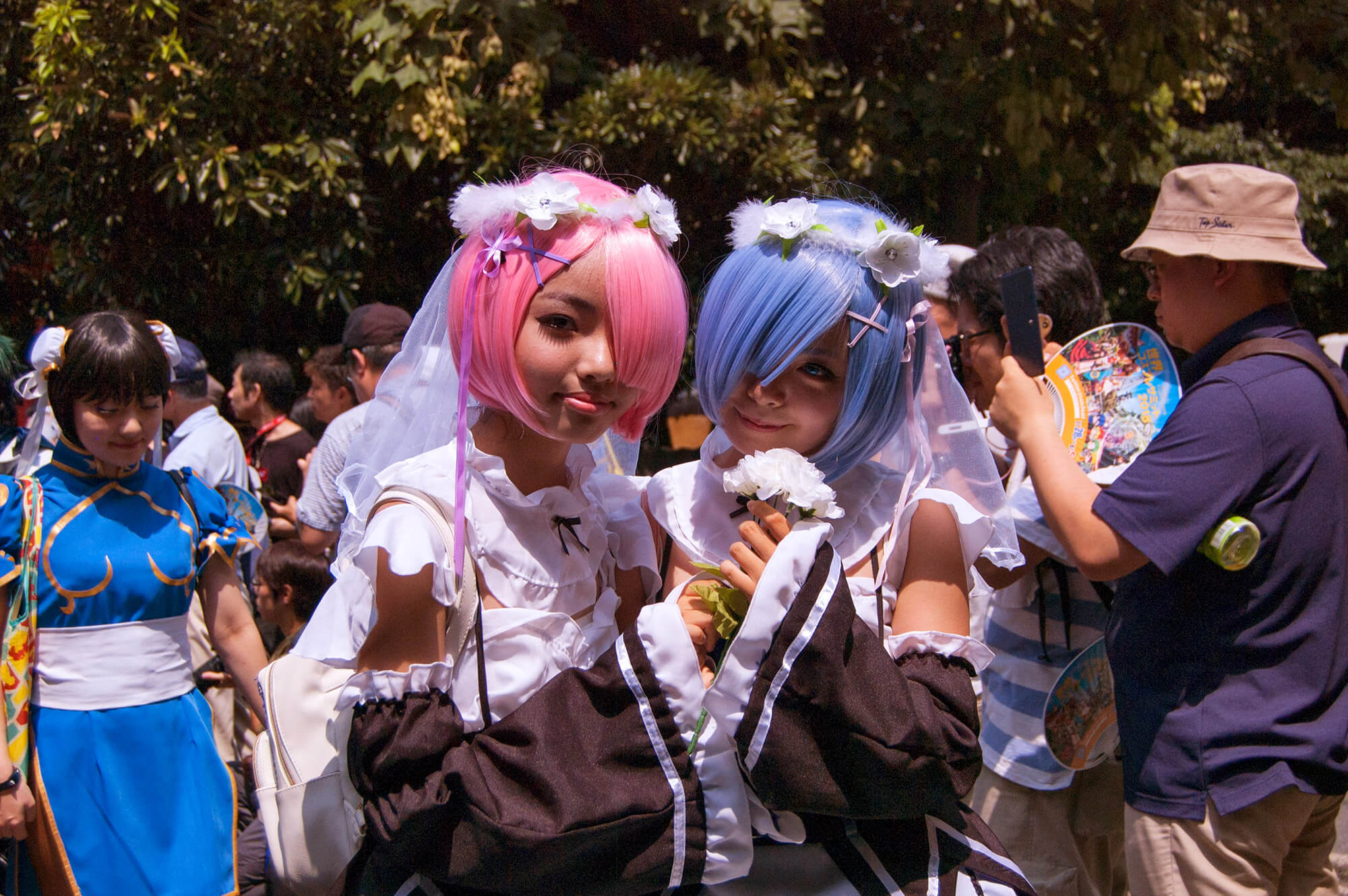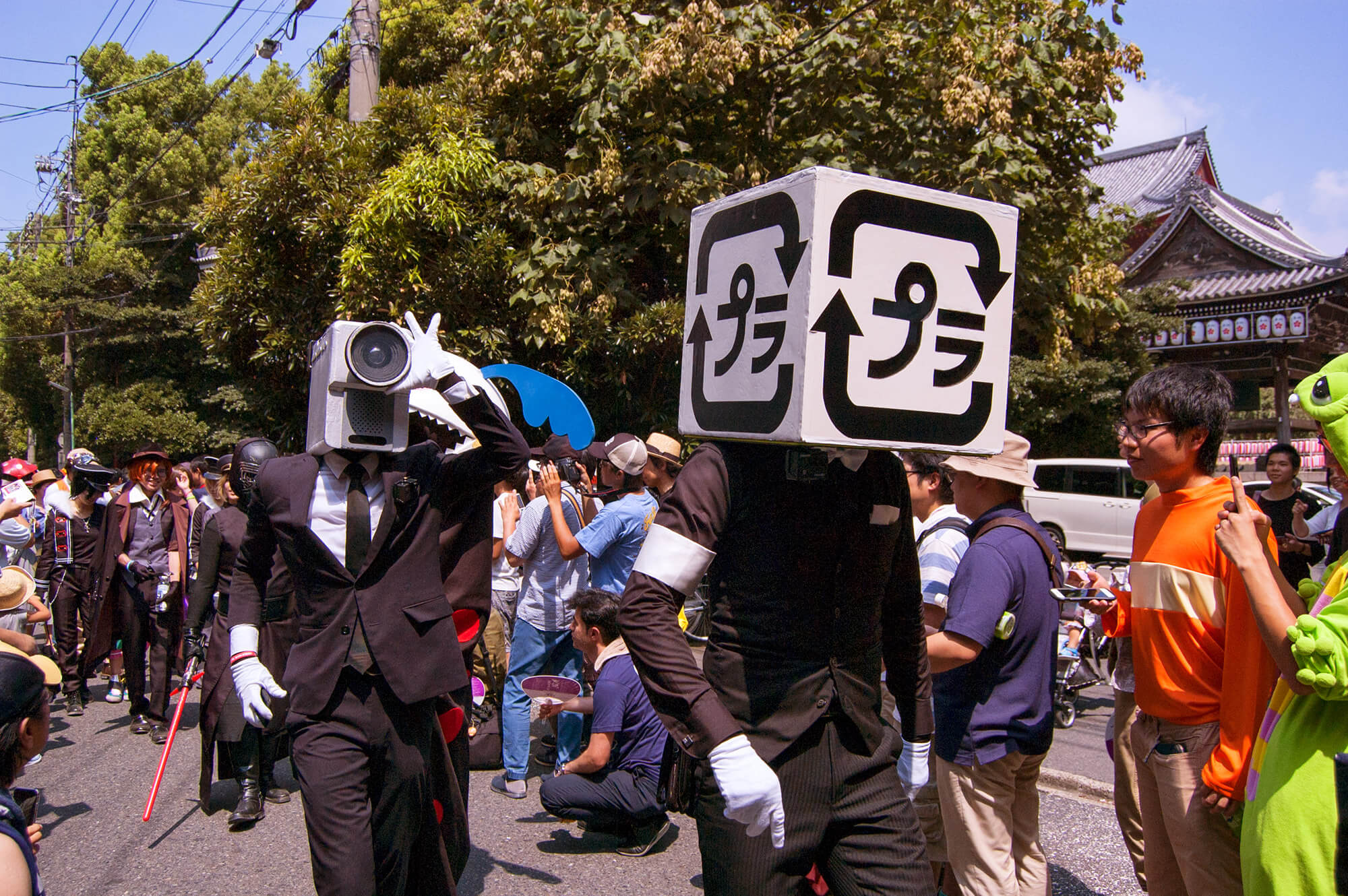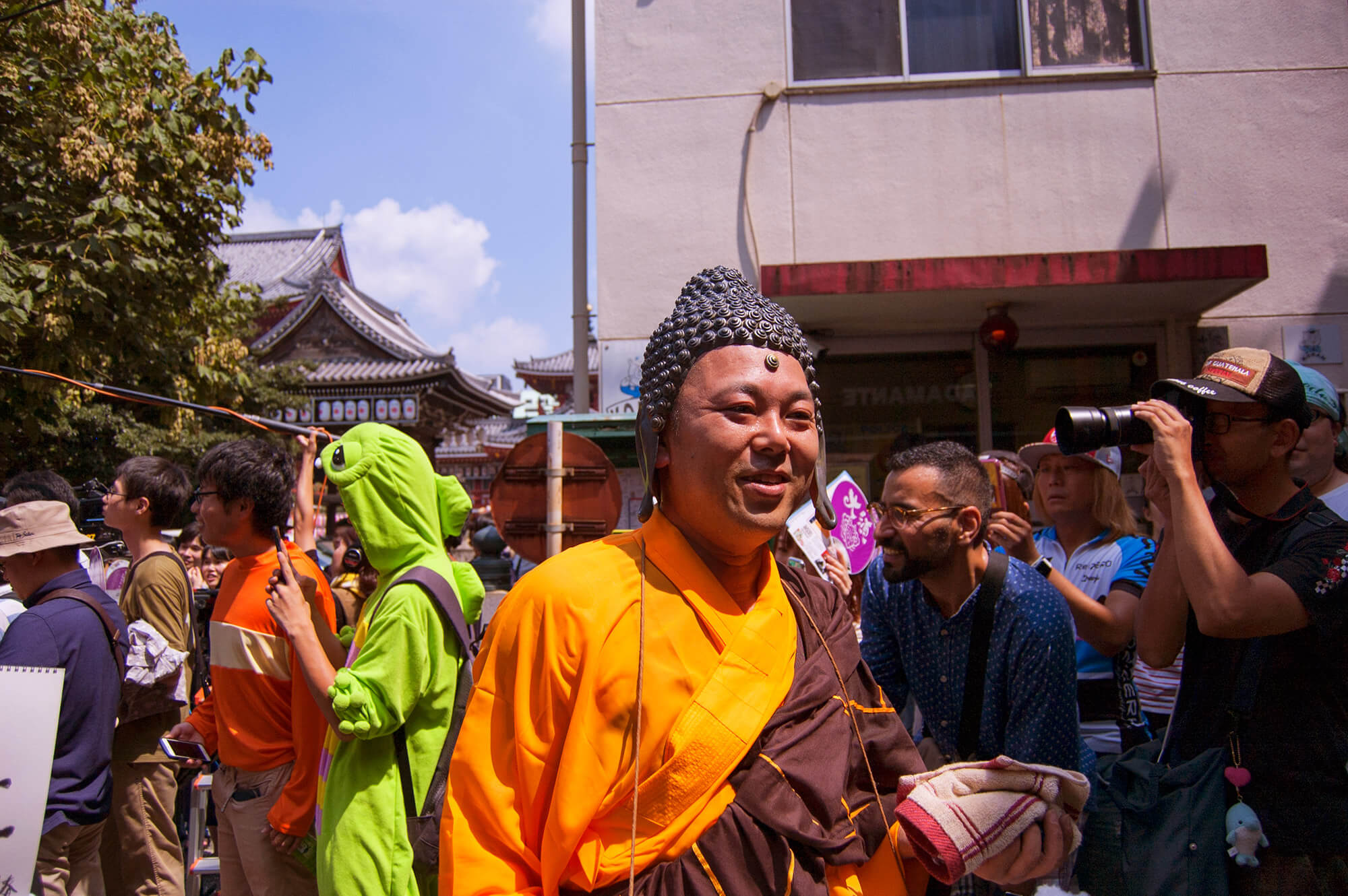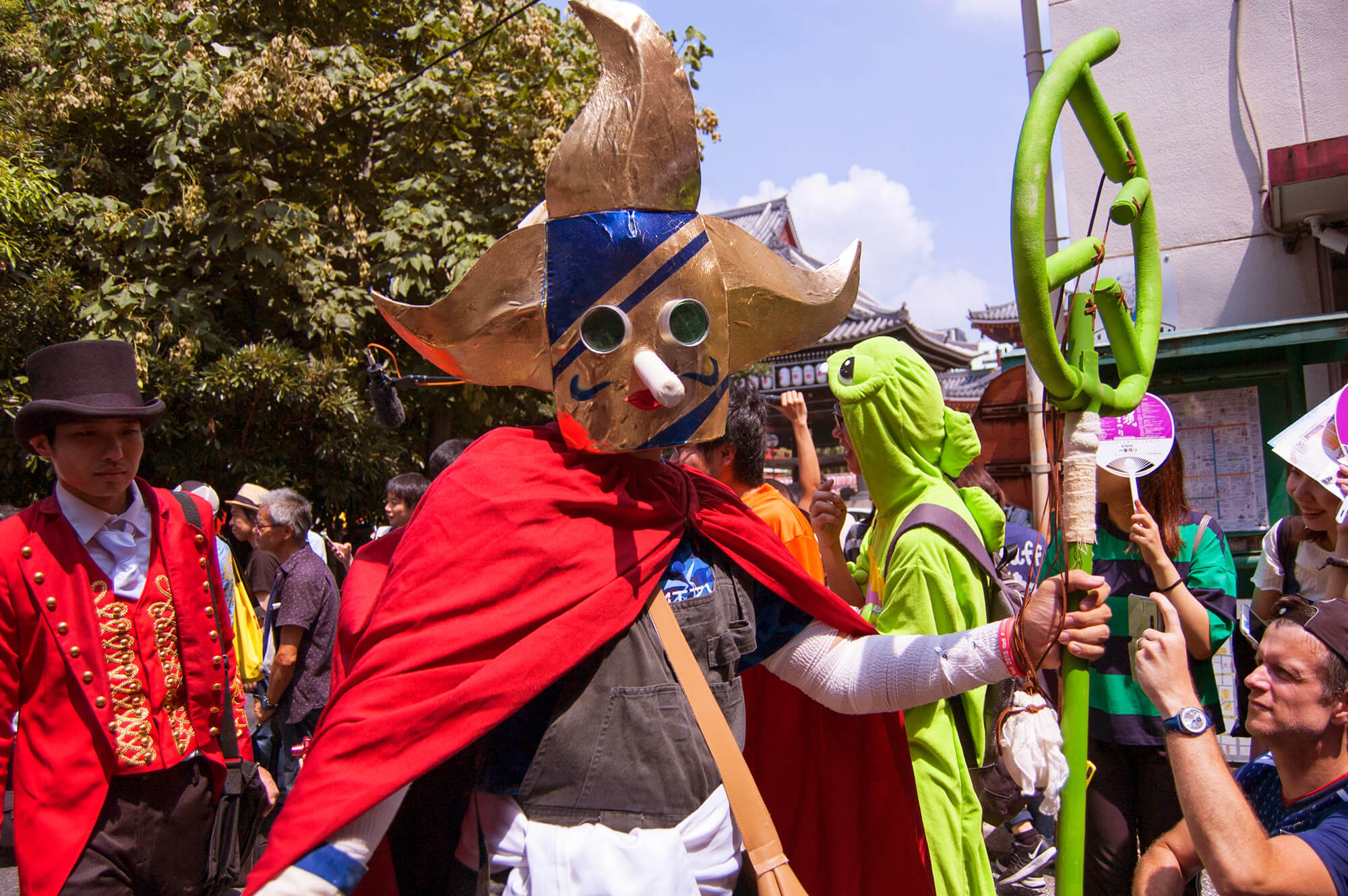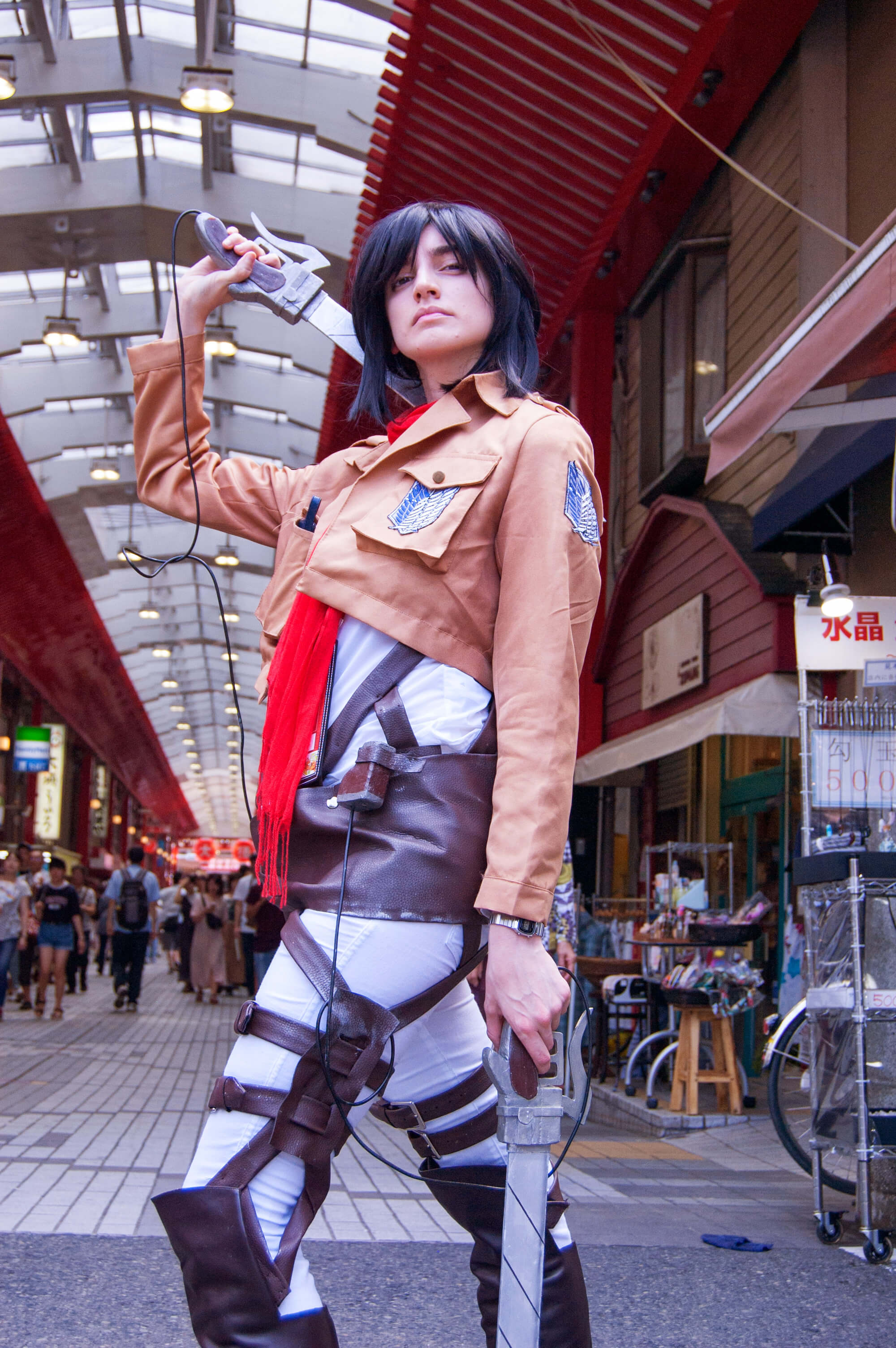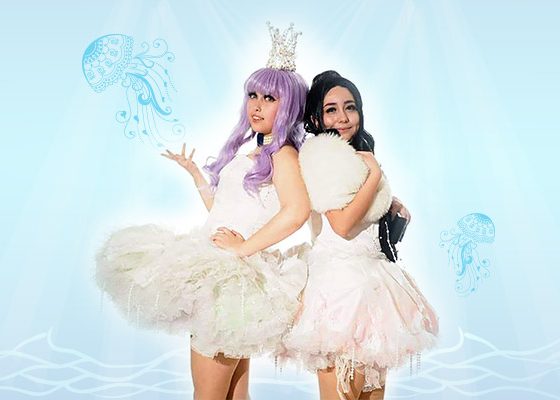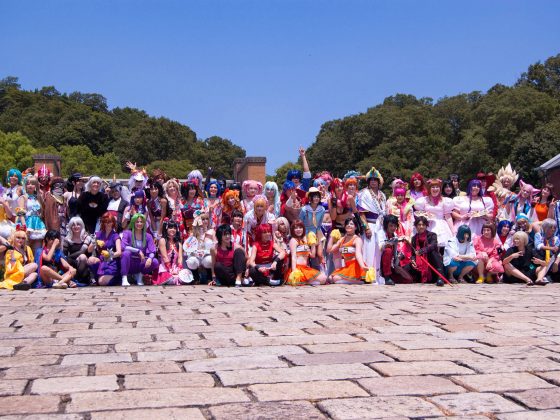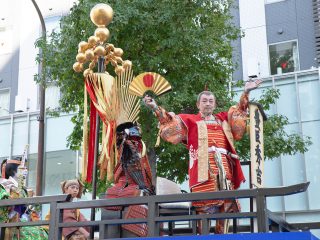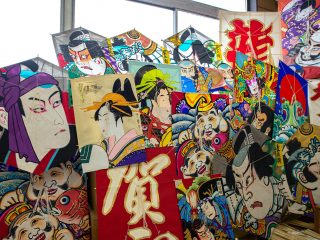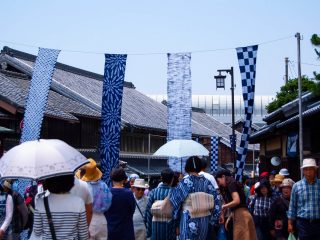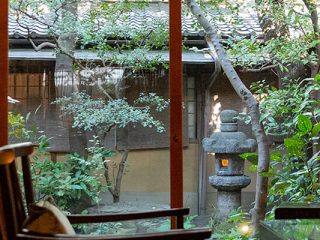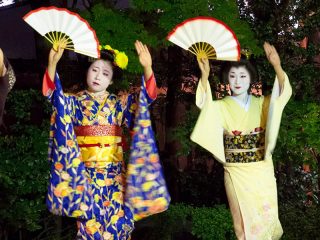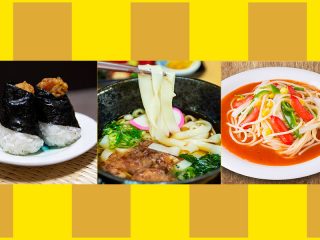Another year, 36 countries and regions compete in the World Cosplay Summit (WCS) and show their best costumes from popular characters of anime, manga and video games.
Osu Cosplayers Parade
The day begins with the cosplayers parade in the commercial district of Osu. The starting and ending point is the Temple of Osu Kannon.
The thermometer shows 40 degrees Celsius and the area is hit by a suffocating hot. The cosplayers, dressed in their best costumes are getting ready for the Great Osu Parade. The public is coming together side by side in the streets of the district, setting up their cameras to not lose a single detail of each cosplayer.
At that moment the WCS cosplayer representatives make their entrance and attend the photographers and fans with their best smiles and poses. With them, the parade begins. A leading band, cosplayers representing the 36 countries and regions of the WCS. And then other cosplayers who participate freely in the parade.
The expected champioship
After the parade, it’s time for the champioship. Inside the Dolphins Arena Stadium there are a lot of nerves and emotions. Which team will be the winner?
The performances are divided into 3 blocks with 12 performances each.
Block 1: Italy, Hong Kong, South Africa, Belgium, Costa Rica and Malaysia.
Block 2: China, Canada, Denmark, India, Australia and Vietnam.
Block 3: USA, Spain, UK, Netherlands, France and Brazi.l
Block 4: Japan, Kuwait, Bulgaria, Taiwan, Finland and Singapore.
Block 5: Thailand, Russia, Korea, Sweden, Mexico and Portugal.
Block 6: Philippines, Myanmar, Switzerland, Chile, Indonesia and Germany.
Four hours of very hotly contested performances. Light visuals, projection screens, sound, choreography … every country and region giving everything on the stage. And between blocks, the judges already anticipating their impressions of the performances.
All the participants make a performance where they demonstrate their scenic skills, as well as their creativity and ingenuity on stage.
The most repeated theme is sword fighting. Thailand gives one of the best in terms of scenography of this theme. His performance represents the anime “Sengoku Basara” set in the Sengoku period of Japan, where war and chaos reigned. The costumes, the choreography of fight and the effects are taken care of in detail.
One of the most endearing performances is the one made by the Vietnam team with Doraemon. The idea of changing the face expression of Doraemon’s character adds an unexpected touch of realism to the interpretation.
But the performance that has more impact was that made by the Mexican team, with the interpretation based on the famous video game “Street Fighter”. A fight of 2 rounds and a bonus track between the characters Dhalsim, the yoga teacher, and Chun Li, an expert in martial arts. An impressive show that made the whole stadium vibrate.
Once the proceedings are over, the jury’s deliberation is reached. In third place Thailand, followed by Indonesia as second winner, and Mexico as the undisputed winner, occupying the first place.
1 – Mexico performance
2 – Indonesia performance
3 – Thailand performance
The Mexican team completely razed this event, taking not only the first place but also 5 of the 8 awards granted that same night.
Air Asia Award (Alumni)= Mexico
Brother Award (for Best Fabric)= Denmark
Azur Lane Award (for Best Armor)= Indonesia
Laguna Ten Bosch Award (for Best Performance)= Mexico
Futaba Award (for Respect)= Mexico
Rinn Award (for Best Aspect)= Mexico
Sprearhead Award (Oasis 21 public vote)= Vietnam
Niconico Award (Vie vote)= Mexico
Awards and closing ceremony

